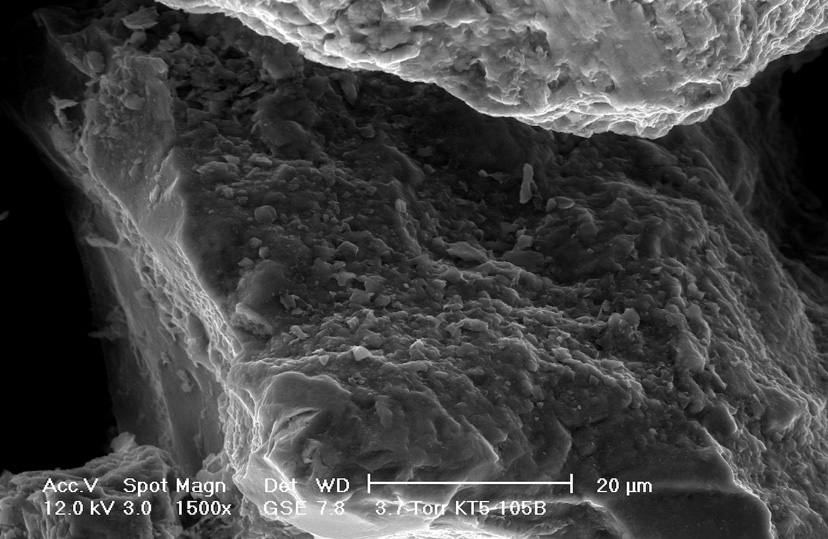New Study Confirms A More Sustainable Approach To Treat PFAS
By Ryan Moore

The long-term performance of colloidal activated carbon to eliminate PFAS exposure risk is proven on sites globally.
Firefighting training areas at military and commercial airports are among the most significant sources of contamination of PFAS (per- and polyfluoroalkyl substances) in groundwater and drinking water globally. According to a newly published modeling study, in situ (i.e., in place) passive filtration using colloidal activated carbon represents a significantly more sustainable long-term solution to removing the PFAS exposure risk originating from these sites.
Groundwater PFAS Impacts At Airports
Based on data1 from the Social Science Environmental Health Research Institute (SSEHRI) at Northeastern University, 437 airports, AFFF (aqueous film-forming foam) sites, or military facilities have confirmed PFAS contamination in groundwater. Many of these facilities have PFAS contaminant plumes in groundwater threatening public and private drinking water sources or surface waters.
PFAS contamination identified at firefighting training areas represents a high exposure risk for many communities. These PFAS source zones were created by spraying AFFF-containing PFAS to extinguish fires during fire training exercises, usually conducted in open fire pits or on designated areas of airport tarmacs. The mandatory periodic training exercises left high masses of toxic PFAS chemicals directly exposed to rainwater.
Rainwater causes PFAS and other contaminants (e.g., petroleum hydrocarbons from jet fuel) to leach into groundwater. Once PFAS reach groundwater, they are readily transported by it. Since the more toxic PFAS compounds such as perfluorooctanesulfonic acid (PFOS) and perfluorooctanoic acid (PFOA) do not appreciably degrade in the environment, they can travel for miles downgradient toward public water supply wells, domestic drinking water wells, or surface waters.
One estimate suggests that more than 200 million people2 in the U.S. may be exposed to PFAS in their drinking water. Additionally, the forever chemicals are found in most streams and lakes with concentrations of PFAS, and PFOS specifically, in fish, triggering “Do Not Eat” warnings nationwide. Unsurprisingly, drinking water and surface water PFAS impacts are often the highest downstream of airports and other AFFF release sites.
Sustainable PFAS Groundwater Remediation
Given the scale of the PFAS problem at airports and military bases, there is substantial interest in identifying technologies and approaches that can sustainably remove the PFAS exposure risk from them. One approach continuing to gain critical acceptance and deployed worldwide uses colloidal activated carbon (or CAC) to transform the groundwater aquifer into a massive underground filter. This filter immobilizes PFAS, preventing the contaminants from reaching drinking water wells, surface water, or other downstream receptors.
Commercially known as PlumeStop, CAC is activated charcoal sourced from coconuts, milled into red blood cell size particles, and suspended in a food-safe solution to create a liquid, colloidal form of activated carbon. Ink-like in appearance, the patented novel carbon form is nonclumping, allowing it to slip through the soil or rock pores. In the process, PlumeStop “paints” the subsurface with highly reactive carbon, forming an expansive subterranean filter covering 100 acres for each pound of carbon attached to the aquifer matrix.
The below-ground CAC filter is installed as one or a series of permeable reactive barriers (PRBs) between a PFAS source and a downgradient receptor (e.g., water well or stream). Based on known measured rates of contaminant flux, these PRBs are engineered to immobilize PFAS for decades or longer.
The default method historically used to mitigate PFAS involves pumping groundwater above the surface for treatment, an energy-consuming activity generating a massive carbon footprint. A single continuously operating pump-and-treat (P&T) system used to control a PFAS plume can generate millions of pounds of CO2 emissions over its lifetime and even more for hauling the PFAS-saturated wastes to a landfill, where PFAS may ultimately leach back into the environment, starting the process all over again.
More recent experimental P&T approaches seek to destroy the PFAS, subjecting the pumped water to high temperatures, pressures, or energy inputs needed to break the resilient carbon-fluorine bonds. The energy required to accomplish this destruction adds to the carbon footprint substantially. While destructive technologies such as supercritical water oxidation and electrochemical oxidation may be adequate for specific applications (e.g., treating landfill leachate), they are not sustainable for addressing large low-concentration PFAS plumes in groundwater.
In contrast, the in situ CAC treatment process is 100% powered by naturally occurring groundwater flow. This passive approach to preventing plume movement offers one of the only sustainable solutions for addressing PFAS in groundwater.

Scanning electron microscope image shows CAC coating sand grains.
New Research Study Points To Long-Term Success Of In Situ CAC Approach
A recent study by leading groundwater modeling expert Dr. Grant Carey was published in the Remediation Journal. Titled Longevity of colloidal activated carbon for in situ PFAS remediation at AFFF-contaminated airport sites,3 the study analyzes the expected long-term performance of the patented CAC technology to effectively treat PFAS in situ based on PFAS sampling data from 96 AFFF-contaminated airport sites and performance data from 17 in situ CAC applications. Some of the key findings from the study are summarized below.
- CAC preferentially sorbs contaminants found at airports. The primary PFAS detected at airports were dominated by PFOS and PFHxS (perfluorohexane sulfonic acid), compounds preferentially sorbed to CAC relative to other PFAS.
- Contaminant breakthrough times for in situ CAC treatments are much longer than ex situ P&T carbon use. This is mainly due to the smaller particle size of CAC, resulting in higher mass transfer rates and belowground application, resulting in much longer contaminant retention on the carbon particle surfaces.
- Seventeen (17) field sites show successful results with co-contaminants present. Field sites where CAC was applied to treat PFAS were reviewed, showing successful results for treating both long and short-chain PFAS even in the presence of co-contaminants such as fuel hydrocarbons (used for creating flammable liquid fires). The project sites continue to perform.
- Modeling indicates decades of treatment longevity. The authors developed isotherms for sorption to CAC using water collected from an actual AFFF-impacted airport site. Numerical modeling was conducted to evaluate the sensitivity of in situ CAC remediation of PFAS to site characteristics and design variables. The results further support earlier predictive modeling, conservatively suggesting decades of effective treatment at most AFFF releases, regardless of the cleanup criteria.
- Longevity can be extended by reducing the incoming mass flux. Results indicate that in situ CAC treatment performance was most affected by incoming contaminant mass flux. Treatment longevities can be increased when combined with upgradient source zone treatments that prohibit further leaching and reduce the downgradient contaminant flux over time. These treatments include paving/capping a source zone to limit infiltration, mixing of materials into the upper soil layer to reduce permeability, and applying a concentrated CAC formula (commercially available as SourceStop) to the base of a source zone.
The findings of this study confirm that CAC treatments offer a long-term, effective, more sustainable solution to reduce PFAS exposure risk from AFFF releases at airport sites. The CAC approach is poised to replace P&T, potentially saving billions of dollars in system installation, O&M costs, and millions of tons of greenhouse gas emissions.

Cross section and aerial view of CAC sorptive barriers to treat a groundwater contaminant plume
Over 40 CAC in situ filtration treatments are now installed, including recent installations at airports and airfields in the Northeast, Mid-Atlantic, Midwest, and Southwest U.S. regions, Alaska, and Great Britain. Full-scale treatments meet the project objectives, with the longest-running treatment4 having eliminated PFAS in groundwater for over six years thus far. Hundreds more projects are currently in the planning or design stages.
Additionally, several U.S. Department of Defense-funded laboratory and field research projects examining various technical aspects of the innovative CAC treatment approach are ongoing, including Strategic Environmental Research and Development Program Projects ER20-5182, ER21-1059, ER21-1130, ER21- 3959, and ER21-1124.
References
- https://docs.google.com/spreadsheets/d/10y4u1KG6gegnw3zoTUTbXxQiEqitU1ufPlGvGiETtcg/
edit#gid=682068550 - https://pubs.acs.org/doi/10.1021/acs.estlett.0c00713
- https://onlinelibrary.wiley.com/doi/full/10.1002/rem.21741
- https://onlinelibrary.wiley.com/doi/10.1002/rem.21558
 About The Author
About The Author
Ryan Moore is the PFAS program manager at REGENESIS®. He can be reached at 219-286-4838 or rmoore@regenesis.com.
